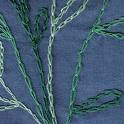I was initiated to the
eternal battle of the sexes – the
tug-of-war between
MAN and WOMAN – very early in life, when as a child I witnessed the almost-daily frictions between my
Dadu and
Didu (grandfather and grandmother).
They were
never direct all-out-in-the-open kind of lung-busting quarrels (
the kind I have with the spouse, unfortunately).
Dadu and Didu’s fights were more oblique, masked in poiteness, full of snide repartees and subterfuge, and guerilla-like. They would usually
fight over absolutely trivial matters, usually if
gregarious Didu got too caught up in talking to somebody and forgot to serve
Dadu his food on the dot at the appointed hour/minute/second. And
taciturn Dadu would invariably strongly protest if
Didu abandoned him for a few hours and went off to see films, at the local cinema hall (
the now-defunct Chitrabani).
But
Dadu was so dependant on his wife that he never made frontal attacks. Instead
he would make increasingly incensed snide remarks about the vagaries of the female sex, especially of women belonging to ‘sambhranto paribar’ (respectable families).
We children (
my brother and I, and our cousins who would come over during the languid long summer vacations)
were vociferous supporters of Didu. For one,
she took us all along
when she went to see films.
She also told us long and exciting - and more importantly unending -
stories about her own childhood and marriage (
which actually coincided, as she got married when she was twelve).
She often gave us pocket money to buy sweets and stuff. Above all,
she allowed us to play with her thinning white hair and pluck off as many as we wanted to.
Although my peace-loving brother would sometimes plead with
Didu to stop arguing
(“Chup karo, chup karo”),
I, being the more argumentative sort, would lustily egg Didu on (in the manner of rowdy football fanatics) with cries of “Narad, Narad” (Narad is the Hindu god who loves to incite debates and arguments).
Confident of our loyal support, she hardly ever deigned to reply to Dadu’s digs, smiling benignly and uncaringly going on with her work, which mostly consisted in looking after her cantankerous husband.
But it was not as if she did not take her revenge. Her way of retaliating was
by making herself absent. In this, the TV set was her daily ally. Our
television set occupied a place of honour in our upstairs drawing room. And every evening, without fail,
Didu would wash and powder and her face and neck, wear a freshly washed and ironed white saree, tightly braid her more-salt-less-pepper hair (
the evening beauty ritual of every lady of the aforementioned ‘sambhranto paribar’ – respectable families) and, politely-but-gleefully taking leave of
Dadu, would
go upstairs to watch whatever
Doordarshan would dish out on the black-and-white TV set
for over three hours. Meanwhile,
Dadu got more and more restless and furious, sitting agitatedly on the bed which he refused to leave. In fact, so keen was she to punish him for his daily meanness, that she would watch incomprehensible programmes on farmers’ welfare and suchlike, just to spite him back.
And
Didu had a
brahmastra (the deadliest weapon of all). If
Dadu became especially difficult to manage, she would pack her bags and, bidding a sweet and apparently-fond goodbye (
which concealed a below-the-belt-punch),
she would take off for a week or so, to visit her daughter (my Chhotopishi) in Calcutta.
Dadu, quite knocked out by this sucker punch, would protest feebly, complaining of possible negligence in her absence (“
Who will look after me now that you are gone?”), but
Didu would go unworried and unperturbed, because she knew that my mother would take as good care of
Dadu as she herself did.
Distance definitely seemed to make the cranky old man’s heart grow fonder. Because the
only time we saw Dadu fussing over his wife was when she returned from her trip, rising from his bed (
a very rare and miraculous happening) to welcome her at the door, taking her bag from her hand, and even switching on the fan for her to cool down after the journey (
this was also a rare miracle, as Dadu belonged to the pre-electricity generation who was extremely frugal about electric consumption. In fact, he would spend a considerable time gazing in stupefied agony at the slowly ticking/rising electric meter outside his window).
The next day would be a different story though, or rather the same story, as
Dadu and
Didu,
rested and refreshed by the break,
would be at loggerheads all over again.
You know what? I think they actually relished being at each other’s throats the whole day. Some things never change!
SO, WHEN DID YOU FIRST LAND UP AT THE BATTLEFIELD OF THE SEXES?


















